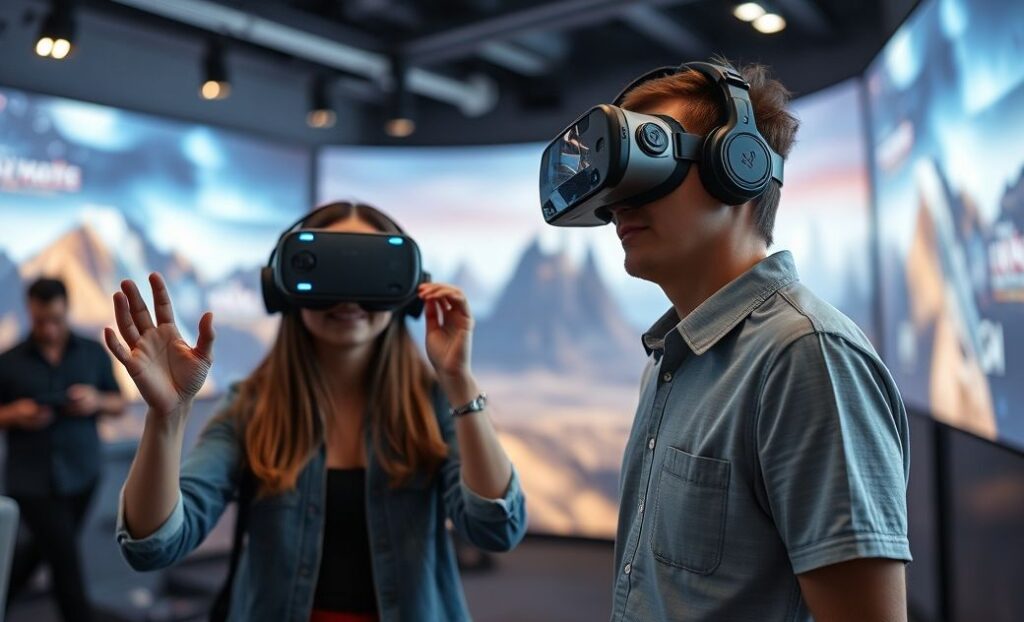Virtual Reality (VR) technology has been a groundbreaking advancement in the gaming industry, transforming the way players experience and interact with games. As VR continues to evolve, it offers unparalleled levels of immersion and engagement, making it one of the most exciting developments in modern gaming.
The Evolution of Virtual Reality in Gaming
VR has traversed a long path from its conception to the sophisticated systems available today. Early attempts at virtual reality were limited by technology and were often rudimentary at best. However, with advancements in computing power, graphics processing, and sensory feedback systems, today’s VR setups provide experiences that border on the indistinguishable from reality itself.
Early Beginnings
The earliest notions of VR in gaming can be traced back to the 1980s and 1990s, with systems like Sega’s VR headset and the Virtual Boy from Nintendo. These devices laid the groundwork but were not successful due to technical limitations and lack of engaging content. However, they demonstrated the immense potential VR held for the future of gaming.
Modern VR Systems
Today, VR headsets like the Oculus Rift, HTC Vive, and PlayStation VR have pushed the boundaries of what’s possible. These devices provide high-resolution displays, motion sensing technology, and room-scale tracking, allowing users to interact with their virtual environments in a way that feels tangible and real. The integration of haptic feedback devices further enhances this experience by enabling users to physically ‘feel’ their virtual actions, deepening the sense of immersion.
The Impact of VR on Gameplay Dynamics
The introduction of VR in gaming has revolutionized gameplay dynamics, offering players experiences that are both physically and emotionally intensive. This new form of engagement deviates significantly from traditional gaming, calling for new skills and sensory awareness.
Enhanced Immersion
VR creates highly immersive environments that allow players to escape reality and immerse themselves fully in the game world. Whether exploring alien planets, battling mythical beasts, or solving intricate puzzles, VR makes these experiences lifelike and compelling. The player’s physical movements are directly translated into the game, making navigation and interaction intuitive and natural.
Redefining Game Genres
In addition to transforming traditional game genres like first-person shooters and adventure games, VR has given rise to entirely new categories of games. VR simulations of real-world activities—such as sports, flying, and even surgical procedures—provide players with unprecedented opportunities to experience situations and challenges they might not encounter otherwise.
Challenges and Opportunities in VR Gaming
While VR has opened new frontiers in gaming, it also faces challenges that developers and technologists continue to address. These obstacles, however, also present unique opportunities for innovation and growth in the industry.
Technical Limitations
Among the primary challenges of VR gaming are the technical limitations such as latency, resolution, and the requirement for high-performance hardware. Ensuring that VR experiences remain seamless and do not induce motion sickness is critical for the technology’s widespread adoption. Continuous improvements in VR technology are aimed at overcoming these barriers, ensuring users have a smooth and enjoyable experience.
Content Creation
For VR gaming to thrive, there must be a steady stream of compelling content that makes full use of the platform’s capabilities. Developers are tasked with creating games that not only look and play beautifully but also offer experiences that are unique to VR. As the medium matures, the demand for skilled VR content creators continues to grow.
The Future of Virtual Reality in Gaming
The future of VR in gaming is bright, with endless possibilities for innovation and exploration. As technology advances, the barriers between the virtual and real worlds will continue to blur, offering players even more profound and engaging experiences. The ongoing development in VR technology promises not just enhancements in visual and auditory fidelity but also advances in artificial intelligence and networking capabilities, paving the way for more interactive and social virtual experiences.
In conclusion, Virtual Reality is not just a fleeting trend in the gaming world; it is a paradigm shift in how games are experienced and conceived. With its potential to create immersive worlds that enhance the emotional and physical engagement of players, VR stands at the forefront of the gaming industry’s future.
